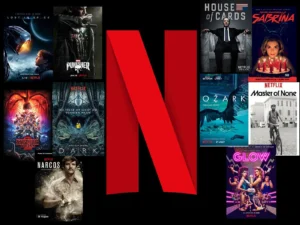The Small Cap Swing Trader Alert Archive
Below you'll find The Small Cap Swing Trader setups stacked up and ordered chronologically.Trump, T-Bills, and the Fed
Trump, T-Bills, and the Fed:
The Hidden Battle to Curb the U.S. Interest Expense
What do Donald Trump’s efforts to remove Federal Reserve Chair Jerome Powell, new legislation targeting digital stablecoins, and a shift in Treasury debt management have in common? Each plays a surprising role in addressing the skyrocketing interest expense on U.S. government debt—a quiet but potent driver of fiscal pressure and budgetary risk.
The Interest Burden from “The Big Beautiful Bill”
With the passage of Trump’s recent infrastructure and economic package—dubbed the Big Beautiful Bill—federal borrowing surged once again. The cost of that borrowing has become increasingly burdensome.
As near-zero interest era Treasurys from the post-2008 and Covid eras mature, they’re being replaced with fresh notes yielding 4% or more, sharply raising debt-servicing costs. The result? Over $1 trillion in annual interest expense, now outpacing even the U.S. military budget.
This reality has turned debt management into a political and economic battleground.
Trump’s Truth Social Push: Cut Rates, Cut Costs
Former President Trump recently posted on Truth Social, advocating for a multi-point cut in the Fed’s policy rate, which is currently in a 4.25%–4.5% range. His logic: Lowering rates would save the federal government billions in interest on newly issued debt.
While the Fed maintains it doesn’t set rates to manage the Treasury’s balance sheet, Trump’s argument spotlights the tension between monetary independence and fiscal consequences.
“T-Bill and Chill”: A Backdoor Budget Strategy
Strategists at BNP Paribas suggest the Treasury take a “T-bill and chill” approach. By issuing a greater share of short-term T-bills—raising their share from the current 15–20% to 25%—the Treasury could significantly lower its borrowing costs.
Why? Because T-bills yield less than longer-dated notes and bonds. Demand from money market funds and foreign investors—who bought $336 billion worth of T-bills in the past year—remains robust, suggesting that the market could easily absorb the extra supply.
This strategy doesn’t reduce the overall budget deficit, but it does minimize the carrying cost—a win for fiscal stability, at least in the short term.
The Powell-Yellen Tug-of-War
This isn’t the first time short-term debt issuance has stirred controversy. Former Treasury Secretary Janet Yellen faced criticism in 2022 for shifting the issuance mix toward shorter maturities. Ironically, her successor, Scott Bessent, has maintained that same mix without change.
Meanwhile, Jerome Powell has held firm that Treasury financing needs don’t influence Fed decisions. But Trump-aligned voices are pushing for a more coordinated approach.
Former Fed Governor Kevin Warsh, a likely Powell replacement in a Trump administration, recently called for a new Fed-Treasury accord, referencing the post-World War II agreement in 1951 that ended the Fed’s support of low Treasury yields. Warsh suggests that without coordination, policy remains at “cross purposes.”
Is This “Stealth QE”?
Dario Perkins of Global Macro argues that favoring short-term issuance is a form of “stealth QE”—a shadow version of Quantitative Easing. QE typically involves the central bank buying long-term securities to inject liquidity and suppress yields, forcing investors into riskier assets.
While the Fed isn’t actively buying bonds now, the reduction of long-term supply by the Treasury could have a similar effect: suppressing long yields, boosting stock markets, and narrowing credit spreads.
Indeed, the S&P 500 and Nasdaq recently hit new highs, IPOs are heating up, and corporate credit remains cheap. However, for small businesses and consumers, credit remains tight, especially with short-term rates, such as the prime rate, stuck at 7.5%.
Conclusion: A Subtle but Powerful Fiscal Strategy
Trump’s rate-cut crusade, legislative reshaping of digital finance, and the Treasury’s evolving issuance mix all reflect a deeper priority: containing the ballooning interest expense on federal debt.
Whether through overt policy shifts or more subtle maneuvers, such as leaning into T-bills, the fiscal and monetary powers of Washington are being repositioned—not just for economic growth, but also to protect the government’s own bottom line.
The real question: Will these maneuvers be enough to manage the risk, or are they just delaying a reckoning with America’s trillion-dollar interest tab?
Interpreting the Session and Anchored VWAP
Interpreting the Relationship Between Session VWAP and Anchored VWAP
Gain an Edge by Understanding the Volume-Weighted Context of Price Action
Volume-Weighted Average Price (VWAP) is a cornerstone tool for professional traders who want to understand where the “fair value” of a stock lies during a given period. But not all VWAPs are created equal. Two of the most powerful variations—Session VWAP and Anchored VWAP—each offer distinct insights into market dynamics. When used together, they can offer a deeper view of buyer and seller conviction and institutional participation.
In this post, we’ll break down what each VWAP tells you, how they relate, and how to use their interplay to refine your trade entries, exits, and bias.
What Is the Session VWAP?
The Session VWAP resets at the start of each trading day and calculates the average price weighted by volume from the market open. It acts as an intraday equilibrium level and is widely followed by institutional traders, market makers, and high-frequency trading algorithms.
Interpretation:
When price is trading above the session VWAP, it signals bullish intraday sentiment; when it’s below, it suggests bearish pressure. Many traders use the session VWAP as a dynamic support or resistance line.
What Is the Anchored VWAP?
The Anchored VWAP is similar in calculation but allows the trader to choose a specific start point—such as a news event, earnings release, breakout bar, or previous day’s high/low. Anchoring the VWAP to a known inflection point lets you measure how the market has digested key events.
Interpretation:
Anchored VWAP represents the average price paid by market participants since the moment of the anchor. It shows whether the crowd is in profit or underwater relative to a key event.
The Power of Comparing the Two
Understanding the relationship between the Session VWAP and the Anchored VWAP can provide powerful context for trade planning.
1. Confluence = Confirmation
When both the Session VWAP and an Anchored VWAP align, that price level becomes a major battleground. If price breaks above this confluence, it often confirms strong upside momentum with institutional backing.
✅ Trading Insight:
Use this confluence as a confirmation trigger. If you’re long-biased, a reclaim of this level on strong volume suggests bulls are in control.
2. Divergence = Caution or Opportunity
When price is above the Session VWAP but below an Anchored VWAP (especially one anchored to a major gap or earnings move), it suggests the current buyers are optimistic but prior participants may still be trapped in losses. The rally could stall near the Anchored VWAP as those participants try to exit at breakeven.
✅ Trading Insight:
Consider partial profit-taking near Anchored VWAP if you’re already long. It can also act as a short entry on a failed breakout or rejection tail.
3. Anchored VWAP as a Bias Filter
Use Anchored VWAP to define a larger time-frame context. For example, if you’re trading intraday but the Anchored VWAP from a large gap down is still overhead and capping price action, your bias should lean bearish—even if the Session VWAP is briefly reclaimed.
✅ Trading Insight:
This is especially useful when trading reversals. Wait for price to break and hold above both VWAPs for a true trend reversal.
Practical Trade Example
Imagine you’re trading AAPL after earnings:
-
You anchor VWAP to the earnings bar at 9:35 AM.
-
You notice that price breaks below both the Anchored VWAP and the Session VWAP by 10:15 AM.
-
Later, price rallies to reclaim the Session VWAP—but gets rejected hard at the Anchored VWAP.
This signals a likely mean-reversion setup—where shorting near the anchored level offers a low-risk, high-reward opportunity as trapped longs exit into strength.
Final Thoughts
By interpreting the relationship between Session VWAP and Anchored VWAP, you tap into a professional framework that filters noise and emphasizes where real commitment from buyers and sellers lies. It’s not about trading every touch—it’s about understanding the narrative of price through the lens of volume.
If you’re serious about taking your intraday trading to the next level, start layering these tools into your charting. You’ll see the market with more clarity—and make decisions with more confidence.
Want to see these strategies in action?
Join us in the War Room for real-time trade setups based on VWAP interactions and institutional footprints. Plus, access our companion VWAP Guide in the Trader Dashboard.
Why VWAP Influences Price Behavior
Why VWAP Influences Price Behavior
In the fast-paced world of intraday trading, the Volume Weighted Average Price—or VWAP—acts as a magnetic line on the chart, pulling price toward it, repelling it, or serving as a pivot point for key decision-making. But what exactly is VWAP, and why does it exert such a powerful influence on price behavior throughout the trading session?
What Is VWAP?
VWAP is the average price of a security throughout the day, adjusted for volume. It’s calculated by taking the total dollar amount traded (price × volume) and dividing it by the total shares traded. Unlike a simple moving average, VWAP takes into account both price and liquidity, making it a more comprehensive reflection of market sentiment.
VWAP = Cumulative (Price × Volume) / Cumulative Volume
It resets at the start of each trading day and accumulates throughout the session, offering a constantly updating benchmark.
Why VWAP Influences Price Behavior
- Institutional Benchmarking
VWAP is a benchmark for institutional traders who aim to minimize market impact. Many large funds and pension managers instruct their traders or algorithms to buy below VWAP (for better-than-average pricing) and sell above VWAP (for better-than-average exits). - Psychological Magnet for All Traders
VWAP represents “fair value” for the day. When the price is significantly above it, many traders view it as overbought; when significantly below, as oversold. This magnetism shapes price action across sessions. - Algorithmic Trading and VWAP Orders
Many trading algorithms are programmed to execute VWAP strategies—distributing orders in line with volume patterns. These flows influence how price behaves intraday, especially in large-cap stocks. - Support and Resistance Behavior
VWAP often acts as dynamic support or resistance. Prices tend to bounce off or reject VWAP levels, which is why many traders place entries and stops near it. - Mean Reversion Trading
Intraday strategies often rely on price reverting to VWAP. When a stock becomes extended, traders look for exhaustion or divergence to fade the move back toward the average.
Real-World Example: VWAP in Action
Imagine a high-volume stock, such as NVIDIA (NVDA), opening with a gap and pushing sharply higher. If the rally extends too quickly and separates significantly from VWAP, it may attract short-sellers betting on a pullback. Meanwhile, long-biased traders may wait for price to retest VWAP for a lower-risk entry. This tug-of-war often leads to consolidation or reversion.
How Traders Use VWAP
- Entry Confirmation: Price reclaiming VWAP is often used as confirmation of strength.
- Stop Placement: Stops are frequently placed just above or below VWAP in mean reversion setups.
- Trend Bias: Trading above the VWAP implies a bullish bias; trading below the VWAP suggests bearish control.
- Multiple Timeframes: Some traders use anchored VWAP or session-specific VWAPs for refined analysis.
Conclusion
VWAP isn’t just a line on the chart—it’s a powerful institutional benchmark, a psychological reference point, and a technical guide that shapes the rhythm of the trading day. Whether you’re trading morning gaps, intraday reversals, or trend continuations, understanding how VWAP influences price behavior is essential to mastering short-term market dynamics.
Trump’s Copper Tariff Shocks Markets
Copper Tariff Shocks Markets: How Investors Can Play the Surge and Brace for the Risks
Copper is surging—and not just on fundamentals. President Donald Trump’s July 8 announcement of a 50% tariff on imported copper has jolted the market, sending prices to an all-time high of $5.69 per pound. It was the single biggest daily gain since records began in 1968.
This massive policy shift is causing widespread economic and investment reverberations. Here’s what’s happening, what it means for markets, and how investors can position themselves.
A Stunning Move: 50% Tariff by August 1
Wall Street had been expecting a 10% to 25% copper import tariff following Commerce Secretary Howard Lutnick’s Section 232 investigation launched in February. But Trump’s move to impose a full 50% tariff has caught even the most hawkish traders by surprise.
Goldman Sachs estimates a 60% chance that the tariff will take effect, with December 2025 copper futures already factoring it in. Copper is up 39% this year—12% of that coming just since the July 8 announcement.
Why Copper Matters
Dubbed the “Ph.D. of metals,” copper is a key barometer for economic growth. It powers everything from mobile devices and data centers to EVs and industrial machinery. Demand is booming from AI infrastructure, electric vehicles, and the expansion of renewable energy.
But the U.S. imports over half of its copper, mainly from Chile, Canada, and Peru. A 50% tariff could add significant costs to manufacturers and ripple through the economy, especially with few viable substitutes.
Short-Term Gains, Long-Term Pains?
For now, investors are front-running the tariff with stockpiling. U.S. copper prices are trading nearly 30% higher than on the London Metal Exchange. However, analysts warn that if Trump backs off, prices could tumble—and if tariffs are implemented, consumer inflation may surge.
Copper is already feeding inflation fears. Higher costs for cars, electronics, and infrastructure are virtually guaranteed if import prices stay elevated. And with mine development taking decades, there’s no quick path to domestic supply.
Investment Opportunities in the Copper Boom
For traders, a dip might be a buying opportunity. Long-term investors have two main strategies:
1. Copper ETFs
- CPER (United States Copper Index Fund): Tracks futures contracts; up 38% YTD. Ideal for direct copper exposure, but comes with 1% expense ratio and rollover costs.
- COPJ (Sprott Junior Copper Miners ETF): Holds junior mining stocks; up 40% YTD.
2. Mining Stocks and Funds
- Freeport-McMoRan (FCX): Largest U.S. producer; 74% of revenue from copper. Expanding operations in the U.S., Chile, and Indonesia.
- Hudbay Minerals and Arizona Sonoran Copper: Smaller-cap U.S.-based projects likely to benefit if tariffs persist.
- ETFs like XME and PICK: Broader metals exposure with some copper insulation.
What’s Next?
The copper market is expected to remain volatile as the August 1 tariff deadline approaches. Investors should brace for sharp moves either way, especially if Trump alters course. Tariff implementation could keep prices sky-high, but walk-backs would almost certainly trigger a steep correction.
Meanwhile, U.S. companies and consumers are bracing for cost pressures. Analysts agree that the 50% tariff is unlikely to resolve supply chain issues in the short term and could exacerbate broader inflation risks.
Bottom Line: The copper rally is real, but risky. Investors should closely monitor policy developments and consider exposure through ETFs or diversified miners. For now, Trump holds the key to copper’s next big move.
Netflix Q2 2025 earnings report
Netflix Q2 2025 Earnings Beat Forecasts: Revenue Surges 16% as Streamer Raises Guidance
Solid Beat on Earnings and Revenue
For the quarter ended June 30, 2025, Netflix reported:
- Earnings per share (EPS): $7.19 vs. $7.08 expected
- Revenue: $11.08 billion vs. $11.07 billion expected
The company also reported net income of $3.1 billion, a sharp increase from $2.1 billion a year ago. Revenue increased by nearly 16% year over year, driven by robust global member additions, higher subscription pricing, and expanding advertising revenue.
Outlook Boosted
Netflix raised its full-year revenue guidance to between $44.8 billion and $45.2 billion, citing the weakening U.S. dollar as a tailwind along with strong operational performance. Full-year free cash flow is now expected between $8 billion and $8.5 billion, reflecting a 91% year-over-year increase in Q2 free cash flow alone.
Strong Operating Metrics
- Operating margin: 34.1% (up nearly 7 percentage points YoY)
- Net cash from operations: $2.4 billion (+84% YoY)
- Free cash flow: $2.3 billion (+91% YoY)
Despite these numbers, the company warned that operating margin will dip in the second half due to heavier content amortization and marketing spend linked to a packed release calendar, including:
- Stranger Things finale
- Wednesday Season 2
- Happy Gilmore 2
- Guillermo del Toro’s Frankenstein
- Live boxing match: Canelo Alvarez vs. Terence Crawford
Investor Reaction Mixed
Shares fell 1.4% in pre-market trading Friday, even as the broader S&P 500 looked poised to open higher. Analysts attribute the slight pullback to valuation concerns — Netflix is trading at roughly 44 times forward earnings, near a three-year high — and the fact that the earnings beat was partially aided by currency fluctuations rather than domestic acceleration.
Still, analysts remain optimistic:
- KeyBanc: Reiterated Overweight rating with a $1,390 price target
- Pivotal Research: Maintains Buy rating with a $1,600 Street-high target
Bottom Line
The Netflix Q2 2025 earnings report showcased a healthy business firing on multiple cylinders — subscriber growth, pricing power, global reach, and advertising — even if some investors found reasons for short-term caution. With new content poised to draw massive global attention in the coming months, Netflix continues to prove its resilience and adaptability in the evolving streaming landscape.
How to Prompt AI for Financial Advice
How to Prompt AI for Better Financial Advice: What Investors Need to Know
Artificial intelligence is reshaping the way we research stocks, analyze sectors, and make investment decisions. However, when it comes to prompting AI for financial advice, many retail investors are still learning that how you ask is just as important as what you ask.
In recent months, there’s been a surge in people turning to chatbots like ChatGPT, Claude, and Gemini to help with financial queries—from building portfolios to analyzing earnings reports. According to Sensor Tower data, questions related to economics, finance, and taxes accounted for 13% of all chatbot prompts between March and April 2025, up from 4% a year earlier.
The takeaway? More people are leaning on AI for money decisions—but not all are getting answers they can trust.
Why Prompting Matters
Large language models (LLMs), like the ones behind ChatGPT, are incredibly powerful—but they aren’t mind readers. They work best when users provide layered, specific instructions. Think of prompting like giving directions to an intern: the more clarity and structure you provide, the better the results.
“LLMs are very smart, but they need the right context,” says Chris Ackerson, SVP of Product at AlphaSense, an AI platform used by hedge funds and institutional investors. “You have to walk them through what you want.”
AlphaSense, for example, customizes public LLMs with proprietary data—like SEC filings, earnings call transcripts, and sell-side research—to deliver deeper insights. Retail investors can’t fully replicate that, but with the right prompting techniques, they can come close.
A Five-Step Prompting Process for Investors
Dave Wang, a former fund manager turned retail trader and AI researcher, shared his approach to prompting chatbots for financial analysis. Here’s his five-part method for getting more accurate, actionable answers:
1. Assign a Persona
Begin by telling the AI what kind of expert to be. For example:
“Act as a senior equity research analyst covering the technology sector.”
This helps the model prioritize relevant data and tailor the tone and depth of the answer.
2. Define the Task
Be clear about what you’re asking the AI to do. For instance:
“Analyze the financial health of Apple (AAPL) using its most recent 10-K filing and Q2 earnings report.”
3. Provide Context
Add relevant data or a brief background to guide the model. Example:
“Apple just posted stronger-than-expected iPhone sales, but services revenue missed. The stock is up 5% after earnings.”
4. Request Specific Output
Guide the format and type of analysis you want:
“Summarize in bullet points the growth trends, valuation risks, and competitive advantages.”
5. Ask for Validation
Prompt the AI to list sources, offer citations, or explain how it reached its conclusions:
“Reference specific line items from Apple’s financial statements or earnings call transcript.”
This helps identify whether the response is grounded in verifiable data—or if it’s just plausible-sounding fluff.
Enterprise AI vs. Public Chatbots
Institutional investors often use enterprise-grade AI tools that integrate proprietary databases and have stricter data validation protocols. These tools—like those from OpenAI, Anthropic, or AlphaSense—cost more but offer added layers of control, privacy, and performance.
Retail investors using public versions of AI should compensate by:
-
Double-checking facts.
-
Cross-referencing results with primary sources.
-
Using AI to speed up research—not replace it.
Where It’s Going
According to a Natixis survey of 520 investment professionals, 58% of firms already use AI in their investment processes. As AI grows more advanced, prompting will become an essential skill—much like reading a balance sheet or spotting technical setups on a chart.
Final Takeaway
AI isn’t a crystal ball. It’s a tool—and one that requires direction. When used properly, it can speed up analysis, surface ideas, and give traders and investors a competitive edge.
But if your only prompt is: “What stocks should I buy?”—don’t be surprised if the results miss the mark.
📈 Want to see how we use AI-powered research in real-time trading? Join our daily War Room sessions at TraderInsight.com/live-stream.




